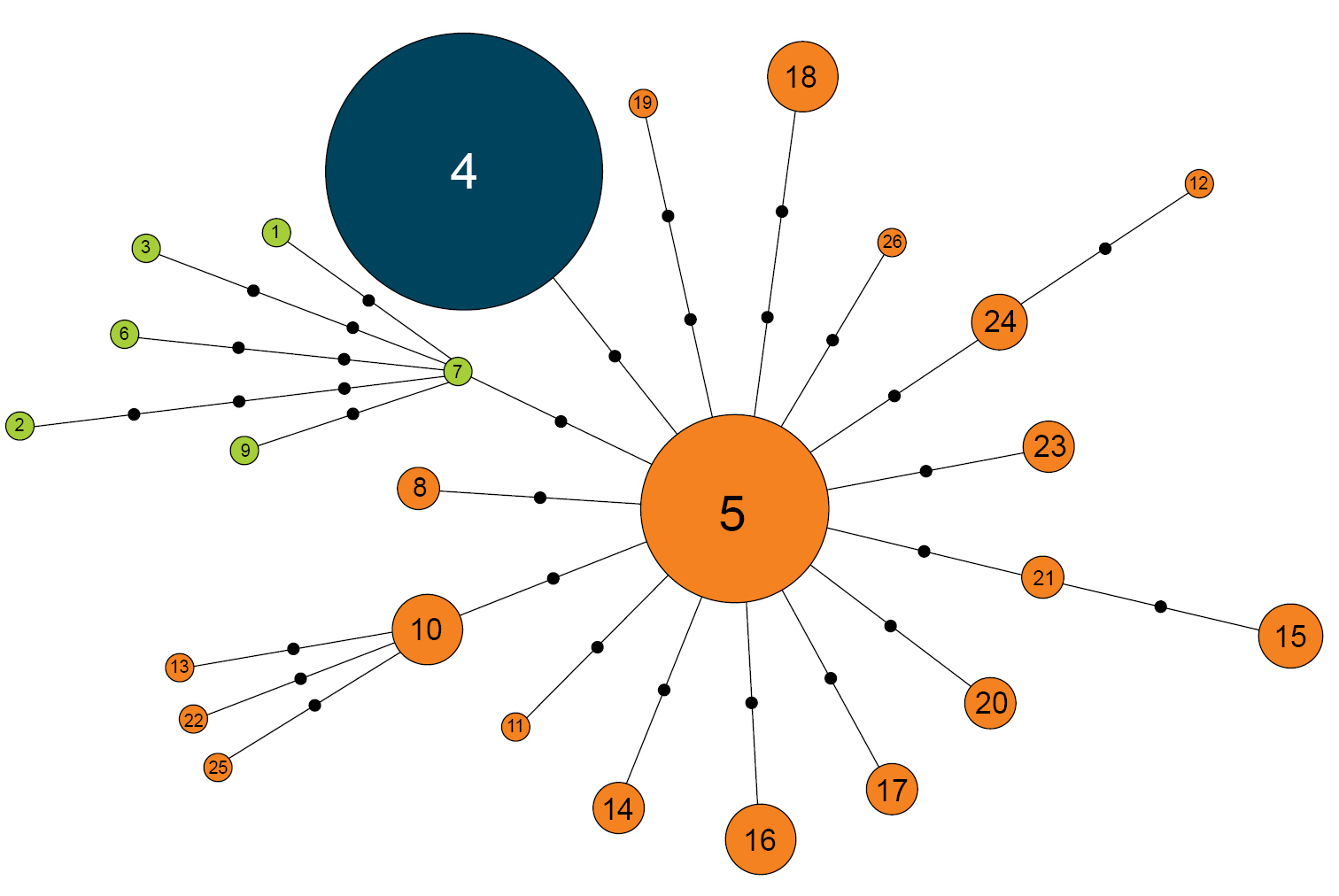
|
||
|
Minimum spanning networks presenting 26 haplotypes in O. barnabita. The size of each circle corresponds to its relative frequency in the total sample. The number in each circle offers a unique identifier for each haplotype (H1-H26). Haplotype samples collected from the Baltic region and Russia (BRR: Estonia, N= 1, H5; Latvia, N= 89, H5, H10-26; Russia, N= 3, H5, H8) are coloured in orange, from Central and Eastern Europe (CEE: Croatia, N= 1, H1; Germany, N= 1, H2; Hungary, N= 2, H6, H7; Slovakia, N= 1, H3; Romania, N= 1, H9) in light green and Finnish samples from the Turku region (FIN, H4: Artukainen, N= 3; Jänessaari, N= 4; Muhkuri, N= 7; Pansio, N= 1; Ruissalo, N= 81; Runeberg Park, N= 1) in dark blue, with haplotype numbers in white. Smaller black dots on lines between individual haplotypes indicate the number of mutation steps separating them. |